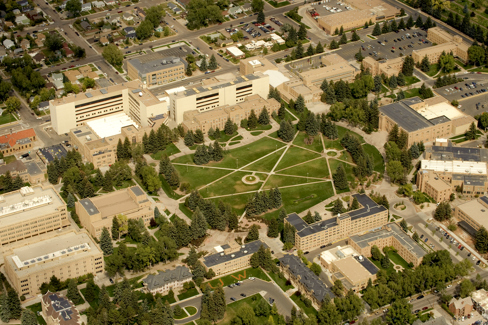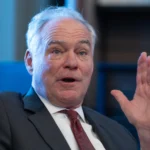University of Wyoming Tackles Declining Enrollment, Retention Trends
Consultant’s ‘strategic enrollment plan’ is new effort to boost student numbers in Laramie
- Published In: Other News & Features
- Last Updated: Aug 15, 2023

To counter recent declines in enrollment and student retention, the University of Wyoming is embarking on a series of initiatives that include the hiring of Ruffalo Noel Levitz, a noted higher education consultancy. (Courtesy photo from the University of Wyoming)
By K.L. McQuaid
Special to the Wyoming Truth
Faced with slumping enrollment and difficulties in retaining students, the University of Wyoming is embarking on a series of initiatives aimed at reversing trends at the Laramie campus.
Most notably, the university has tapped Ruffalo Noel Levitz LLC (RNL), a prominent Cedar Rapids, Iowa-based higher education consulting firm, to develop a comprehensive “Strategic Enrollment Plan” that will serve as a roadmap for potential solutions.
RNL and the university together intend to examine enrollment and retention trends, as well as individual programs affecting the entire student spectrum – from undergraduates to online students – at the state’s only four-year university.
“One of the things that was appealing about RNL in their response to our [request for proposals] was they indicated they would develop a plan that’s unique to the University of Wyoming,” Kyle Moore, the school’s vice provost for enrollment management, told the Wyoming Truth. “They understand the higher education marketplace and will help us develop the right balance of offerings to make us successful.”
RNL, which traces its history to 1973, provides consulting, fundraising and other related services to over 1,900 college campuses and affiliated nonprofit groups annually.
“We work using a four-phase process where we really delve in to understand what’s going on in the state and bordering states,” Lewis Sanborne, a RNL senior vice president and its leader in strategic enrollment planning, said in an interview with Wyoming Truth. “The idea is to get a whole bunch of people pulling in the same direction.”
UW will likely need a concerted effort if it is to overcome its recent enrollment and retention issues.
Since 2018, UW’s total enrollment has fallen by 11%, university provost Kevin Carman acknowledged in a July email to staff and faculty. First-year student enrollment projections for this fall are expected to be down by 15%, and non-resident transfers and continuing student projections also show “significant year-over-year declines.”
The 11,100 students enrolled at the beginning of the Fall 2022 semester, in fact, represented the lowest count since the 1997-1998 school year. Typically, attendance ranges between 12,000 and 13,000 each fall.
“There is no escaping the fact that UW is challenged with decreasing enrollment,” Carman wrote.
Socio-economic challenges
In all, total enrollment is expected to be off by 5% this fall from the same period a year ago.
At the same time, the university also has had difficulties keeping students on track to graduation once they enroll.
“We clearly have challenges in retaining our students once they are here,” Carman wrote.
Although COVID-19 negatively impacted enrollment, Moore said UW’s issues cannot be linked exclusively to the pandemic.
“We’re seeing triggers that are not just part of an anomaly like the pandemic,” he said.
UW isn’t alone in declining enrollments, either.
In 2017, post-secondary education participation stood at 69.13% of the available population in the U.S., according to USA Facts, a data website, and the National Student Clearinghouse Research Center.
Five years later, the percentage had dropped to 61.8% amid a series of macro socioeconomic disruptors. Most notably, many college-aged citizens are foregoing college to enter the workforce because of the number of available jobs that don’t require higher education.
At the same time, many students have begun questioning the cost of higher education and their willingness to be saddled with debt – sometimes for years – to pay for a four-year degree.
In Wyoming, too, high school graduation rates and future enrollments are expected to be flat or decline slightly in coming years, according to population estimates.
To counter the trendlines and attitudes, UW began working on a number of initiatives to boost enrollment and retention even before hiring RNL.
The school purchased a software package known as NAVIGATE to provide detailed student data, which Moore said will help identify areas where students might need assistance.
The university last year also began working with Shorelight Corp., a company formed in 2013 to recruit international students to U.S. colleges and universities. In all, the company has placed over 26,000 students, according to its website.
Shorelight’s first students will be in Laramie this fall, but Moore anticipates the company’s true impact will be felt beginning in 2024.
UW has also initiated a college preparation program called “Saddle Up” aimed at bolstering retention among first-year students using peer counselors and other methods.
Moore said the school is considering tweaking financial aid offerings, beefing up its number of online classes and making transferring into the school a more seamless process, as well.
Sanborne said RNL intends to study market development, the school’s program mix, demographic and workforce trends and overall offerings in developing its strategic plan for delivery next April.
The consultant also will provide ways UW can better communicate with currently enrolled students.
“The good news is that for Wyoming residents, UW is incredibly affordable,” Sanborne said. “[The university’s] situation is not dire.”
For the 2023-2024 school year, undergraduate tuition and fees for in-state residents will cost $7,418, according to UW’s website. Non-resident undergraduate tuition and fees will run $23,198.
Just prior to the pandemic, for instance, UW had its biggest freshman classes in its history, and in 2022, its in-state freshman class was larger than it had been in a decade. At the same time, non-resident enrollments grew by nearly 16%.
“I think mainly we’ll be integrating our ideas with the work they’re already doing,” Sanborne said of UW. “In some cases, it’ll simply be a matter of properly scaling their efforts.”













